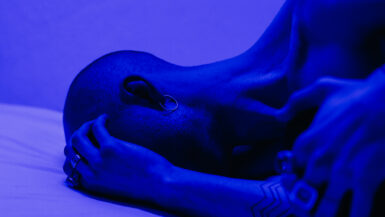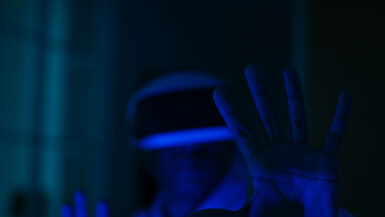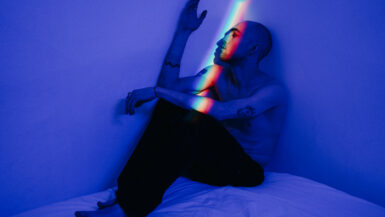In today’s fast-paced digital world, exposure to blue light emitted from various screens and devices has become an integral part of our daily lives. But what is the impact of this ubiquitous blue light on our sleep patterns and overall mental performance? This article delves into the science behind blue light, its influence on our circadian rhythms, and how it affects our sleep quality and cognitive abilities. Furthermore, we will explore practical strategies for mitigating the negative effects of blue light exposure to ensure a healthy balance between modern technology and our well-being. Join us as we unravel the complex relationship between blue light, sleep, and productivity in order to promote a more mindful and efficient lifestyle.
Tips for Managing Blue Light Exposure for Better Sleep and Productivity
In order to effectively balance the advantages of modern technology with the need for a healthy lifestyle, it is important to manage our exposure to blue light. This section will provide practical strategies to help reduce the impact of blue light on sleep and mental performance, ultimately enhancing overall productivity.
Establish a Consistent Sleep Schedule
Developing a regular sleep pattern is essential for maintaining a healthy circadian rhythm. Going to bed and waking up at the same time each day, even on weekends, helps regulate your internal clock and improves sleep quality. By following a consistent schedule, exposure to blue light in the evening will have a lesser impact on your ability to fall asleep and stay asleep.
Create a Screen-Free Bedroom Environment
To minimize the effects of blue light on sleep, it is advisable to make your bedroom a screen-free zone. This includes removing or turning off devices such as televisions, computers, tablets, and smartphones at least an hour before bedtime. Doing so will help your brain produce melatonin, the sleep-inducing hormone, making it easier for you to fall asleep.
Utilize Blue Light Blocking Tools
There are various tools and technologies designed to help reduce blue light exposure, especially during nighttime hours. These include blue light filtering applications, screen protectors, and even specialized glasses. By using these tools, you can mitigate the impact of blue light on your sleep and productivity without entirely giving up your devices.
Adjust Device Settings to Reduce Blue Light Emission
Most devices offer settings to lower blue light emission, such as enabling “Night Shift” on Apple devices or “Night Mode” on Android devices. Adjusting the color temperature of your screens to a warmer tone will help reduce strain on your eyes and minimize the disruption to your circadian rhythm.
Be Mindful of Your Evening Screen Time
It’s crucial to be aware of how much time you spend in front of screens before bedtime. Engaging in relaxing activities such as reading, meditation, or taking a warm bath can help ease the transition to sleep. Additionally, you may find it beneficial to read our article on How Blue Light Affects REM Sleep and Dreaming to better understand the relationship between blue light exposure and sleep quality.
Implementing these strategies to manage blue light exposure will not only improve your sleep quality but also optimize your mental performance, leading to increased productivity in your daily life. As technology continues to advance, it’s essential to find ways to adapt and maintain a healthy balance between the digital world and our well-being.
Blue Light and Circadian Rhythm Disruptions
The relationship between blue light exposure and our circadian rhythms is a complex one. As we delve into the various ways in which blue light influences our internal clocks, it becomes evident that excessive exposure to this particular wavelength can lead to significant disruptions in our natural sleep-wake cycle. In this section, we will explore the science behind how blue light affects our circadian rhythms and the potential consequences of these disruptions on sleep quality and cognitive performance.
How Blue Light Affects the Suprachiasmatic Nucleus
The suprachiasmatic nucleus (SCN) is a small region in the brain responsible for regulating our circadian rhythms. It acts as our internal clock, controlling the release of hormones and neurotransmitters that influence various physiological processes, such as sleep, wakefulness, and metabolism. Blue light exposure, particularly from artificial sources like screens, can directly impact the SCN. When the SCN receives excessive amounts of blue light, especially at night, it may delay the release of melatonin, the hormone responsible for inducing sleep. This can lead to difficulties in falling asleep and maintaining a regular sleep pattern.
Blue Light’s Impact on Melatonin Production
Melatonin is a hormone produced by the pineal gland in the brain and is often referred to as the “sleep hormone.” Its production is stimulated by darkness and inhibited by light, particularly blue light. When we are exposed to blue light at night, our brains may interpret it as daylight, suppressing melatonin production and making it more challenging to fall asleep. As a result, sleep quality may suffer, and individuals may experience insomnia, frequent awakenings during the night, and difficulty waking up in the morning.
Compromised Sleep Quality and Cognitive Performance
The consequences of disrupted circadian rhythms and poor sleep quality are not limited to physical fatigue. Our cognitive performance can also be negatively affected, with implications for productivity, learning, memory, and decision-making. Lack of quality sleep can impair our ability to focus, process information, and retain new knowledge. Moreover, it can also increase the risk of mood disorders, such as anxiety and depression, which further hampers mental performance.
Long-Term Health Implications of Circadian Rhythm Disruptions
Prolonged exposure to blue light and the resulting disruptions in circadian rhythms can have more severe long-term health consequences. Research has linked chronic disruptions of the sleep-wake cycle to an increased risk of obesity, diabetes, cardiovascular disease, and certain types of cancer. Therefore, it is essential to take steps to limit blue light exposure and maintain a healthy circadian rhythm for both our immediate cognitive performance and long-term well-being.
Understanding the intricate interplay between blue light exposure and circadian rhythms is essential for safeguarding our sleep quality and mental performance. By recognizing the potential consequences of excessive blue light exposure, we can take proactive measures to mitigate these effects and foster a healthier, more productive lifestyle.
Impact of Blue Light on Cognitive Performance
As we continue to explore the effects of blue light on sleep and mental performance, it becomes increasingly apparent that this specific wavelength has far-reaching implications for our cognitive abilities. In this subsection, we will delve into the various ways in which blue light impacts cognitive performance, discussing its effects on attention, memory, and decision-making. Additionally, we will highlight the potential consequences of chronic blue light exposure on long-term cognitive health.
Blue Light and Attention: A Double-Edged Sword
Blue light exposure has been found to increase alertness and improve attention, particularly during daytime hours. While this may be beneficial in certain situations (e.g., enhancing focus during work or study), excessive exposure to blue light, particularly in the evening or at night, can lead to an overstimulated brain that struggles to wind down and prepare for sleep. This can result in a vicious cycle of sleep deprivation and reduced cognitive performance, as the brain is unable to adequately rest and regenerate.
Memory Retention and Blue Light Exposure
Research has shown that sleep plays a critical role in memory consolidation, the process by which short-term memories are transformed into long-term ones. When blue light exposure disrupts our sleep patterns, it can impede our ability to effectively consolidate and store new information. This may result in difficulties with learning, recalling important details, or retaining new skills. Therefore, understanding and addressing the impact of blue light on sleep is essential to maintain optimal memory performance.
Decision-Making and Problem-Solving Under the Influence of Blue Light
As blue light exposure can interfere with sleep quality, it comes as no surprise that it may also hinder our decision-making and problem-solving abilities. Sleep-deprived individuals often experience impairments in their judgment, reasoning, and analytical skills, which can lead to poor choices and reduced productivity. By mitigating the impact of blue light on our sleep patterns, we can promote clearer thinking and more effective problem-solving capabilities.
Long-Term Cognitive Health and the Blue Light Connection
Chronic exposure to blue light and the resulting sleep disruptions may have more severe implications for long-term cognitive health. A growing body of evidence suggests that persistent sleep disturbances can contribute to the development of neurodegenerative disorders, such as Alzheimer’s disease and dementia. Thus, addressing the effects of blue light on sleep and cognitive performance is not only essential for our immediate well-being but also crucial for maintaining our cognitive health as we age.
The impact of blue light on cognitive performance is a multifaceted issue, with both short-term and long-term consequences for our mental abilities. By understanding the various ways in which blue light exposure affects our attention, memory, decision-making, and overall cognitive health, we can develop strategies to minimize its negative impact and promote a more balanced and resilient mind. Ultimately, fostering a healthy relationship with technology and managing blue light exposure is integral to preserving both our sleep quality and cognitive performance.
Understanding Blue Light and Its Sources
In order to effectively address the impact of blue light on sleep and mental performance, it is crucial to gain a deeper understanding of what blue light is and where it comes from. This subsection will explore the nature of blue light, its primary sources, and the reasons behind its prevalence in our modern environment. By acquiring a comprehensive knowledge of blue light and its sources, we can better appreciate its influence on our lives and implement measures to mitigate its negative effects on our sleep and cognitive abilities.
The Nature of Blue Light: A Part of the Visible Light Spectrum
Blue light is a part of the visible light spectrum, occupying a wavelength range of approximately 380 to 500 nanometers. It is characterized by its short wavelength and high energy, which is why it is often referred to as high-energy visible (HEV) light. Due to these properties, blue light has a significant impact on our eyes, sleep patterns, and overall well-being.
Natural Sources of Blue Light: The Sun and Its Influence
The primary natural source of blue light is the sun. Sunlight contains a mix of all colors of light, including blue light, which is responsible for making the sky appear blue. Our exposure to blue light during daytime hours is essential for maintaining a healthy circadian rhythm, as it signals our brain to stay awake and alert. However, excessive exposure to blue light, particularly in the evening, can disrupt our natural sleep-wake cycle and negatively affect our mental performance.
Artificial Sources of Blue Light: Screens, LED Lighting, and More
In addition to sunlight, we are exposed to blue light from a variety of artificial sources. These primarily include screens of electronic devices such as smartphones, tablets, computers, and televisions. Blue light is also emitted by energy-efficient LED lighting and compact fluorescent lamps (CFLs), which are increasingly replacing traditional incandescent bulbs in homes and workplaces. As a result, our exposure to blue light has become more pervasive, extending well into the evening hours and increasing the potential for sleep disturbances and cognitive impairments.
Why Blue Light Is Prevalent in Modern Technology: Benefits and Drawbacks
The prevalence of blue light in modern technology can be attributed to a number of factors. Blue light is known for its energy efficiency, making it an attractive option for lighting and display technology. Additionally, blue light has been shown to enhance visual acuity, color perception, and contrast sensitivity, which can enhance the user experience when interacting with screens. However, these benefits come with a trade-off, as excessive exposure to blue light, particularly in the evening, can disrupt our sleep patterns and negatively affect our mental performance.
As we navigate the complexities of our modern, technology-driven world, it is essential to understand the sources and properties of blue light and its influence on our lives. By recognizing the potential consequences of excessive blue light exposure, we can develop strategies to manage our relationship with technology in a way that promotes healthy sleep patterns and optimal cognitive performance. This knowledge empowers us to make more informed choices about our daily habits and activities, ultimately leading to a more balanced and fulfilling life.
Effects of Blue Light Exposure on Sleep Quality
As we delve deeper into the impact of blue light on our sleep and mental performance, it becomes imperative to explore the specific ways in which blue light exposure can affect sleep quality. This subsection will discuss the various aspects of sleep that can be influenced by blue light, including sleep onset, sleep duration, and sleep architecture. By gaining a comprehensive understanding of these effects, we can better appreciate the importance of managing our exposure to blue light and implementing strategies to safeguard our sleep quality.
Delayed Sleep Onset: The Trouble with Falling Asleep
One of the most significant ways in which blue light exposure affects sleep quality is by delaying sleep onset, or the time it takes for an individual to fall asleep. Blue light exposure in the evening can suppress melatonin production, making it more difficult for the brain to transition into a state of relaxation and sleepiness. This delayed sleep onset can lead to a reduction in overall sleep duration, which in turn can have negative consequences for mental performance and overall well-being.
Reduced Sleep Duration: The Consequences of Insufficient Sleep
Adequate sleep duration is crucial for maintaining optimal cognitive function and overall health. However, excessive exposure to blue light, particularly in the hours leading up to bedtime, can interfere with our ability to achieve the recommended 7-9 hours of sleep per night. This reduction in sleep duration can have far-reaching implications for mental performance, as it can impair attention, memory, and decision-making abilities. Furthermore, chronic sleep deprivation has been linked to an increased risk of various health issues, such as obesity, cardiovascular disease, and diabetes.
Altered Sleep Architecture: Disruptions in Sleep Stages and Cycles
Sleep quality is not solely determined by the duration of sleep, but also by the architecture of sleep, which refers to the various stages and cycles that make up a typical night’s rest. Blue light exposure can disrupt the natural progression of these sleep stages, leading to alterations in sleep architecture. This disruption can manifest in the form of reduced time spent in deep sleep and rapid eye movement (REM) sleep, both of which are critical for cognitive function and overall well-being. Impaired sleep architecture can contribute to daytime fatigue, poor concentration, and difficulties with learning and memory.
As we continue to explore the intricacies of blue light exposure and its effects on sleep quality, it becomes increasingly clear that adopting strategies to minimize these effects is essential for preserving our mental performance and overall health. By implementing measures such as creating a screen-free bedroom environment, using blue light filtering tools, and being mindful of our evening screen time, we can actively combat the negative impact of blue light on sleep quality. In doing so, we not only safeguard our cognitive abilities but also promote a healthier and more balanced lifestyle.





Leave a reply